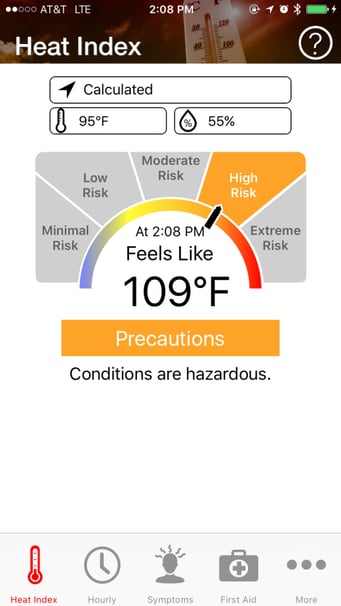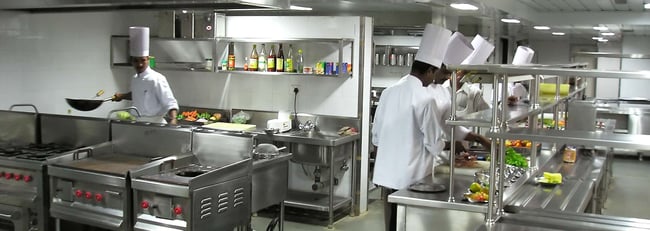
Identifying Open Door Threats in the OR to Reduce Surgical Site Infections
Operating rooms may be among the most tightly regulated environments in healthcare facilities, Sonicy helps ensure they're safe and monitored correctly.
Designed with safety, efficiency and compliance always top of mind, we’ve evolved over a decade with continuous improvements from customer feedback. Serving the healthcare, research and food service industries.
Sonicu offers a comprehensive suite of monitoring solutions
that help organizations safeguard assets, automate compliance and reduce manual processes.
Sonicu offers a comprehensive suite of monitoring solutions
that help organizations safeguard assets, automate compliance and reduce manual processes.
From protecting vaccines and research materials to safeguarding food service and facility operations, Sonicu’s monitoring applications cover temperature, humidity, pressure, and more. Whether you’re in healthcare, life sciences, food safety, or other industries, Sonicu provides visibility, compliance, and peace of mind across all your critical applications.

Understanding Heat Stress and OSHA Regulations: How to Protect Your Employees and Ensure Compliance

Rising temperatures attributed to climate change pose a significant risk to workers, and injuries are increasing as a result.
While heat stress has typically been associated with outdoor working environments in the past, there’s been increasing concern about its effect on indoor workers as well.
Between 2011 and 2019, over 30,000 workers suffered illness or injury due to extreme heat exposure, according to the Bureau of Labor Statistics (BLS).
“Today’s heat waves are just another indication of how extreme heat due to the climate crisis is endangering workers.” — Robert Weissman, president of Public Citizen.
Continued exposure to high temperatures in occupational settings can put employees at great risk of heat stress.
Over time, this can result in heat exhaustion, heat stroke, heat cramps, and similar health challenges.

Heat-Related Illness & Injuries Are a Major Setback for Restaurant Owners and Workers Alike
In the restaurant industry, for instance, food production workers are exposed to high temperatures from grills, ovens, and stoves.
Coupled with extreme heat from heat waves, more of them are likely to develop complications that affect their well-being and negatively impact their productivity.
Studies have linked higher temperatures to greater errors at work, greater risk of injury, as well as worsening of existing health conditions. This has prompted the Occupational Safety and Health Administration (OSHA) to embark on an initiative to raise awareness about heat-related injury and illness in the workplace.
In many instances, cases of heat-related injury at work go unreported, making it difficult to get a clear look at the total number of affected persons. Following increased concern by different stakeholders on the severity of this issue, there is an ongoing effort for OSHA to establish a cross-cutting set of standards for indoor and outdoor working conditions across the country.
For restaurant owners, heat-related illness and injury cause a myriad of challenges. For starters, they lower overall productivity as workers are more likely to be absent from work or unable to carry out their duties.
This hampers service delivery and adversely impacts effectiveness among staff members. Another major headache results from compensation.
Research on compensation cases has established that higher temperatures in the working environment are directly linked to higher employee compensation and health-related expenses.
To further complicate matters, experts hold the view that the numbers, shocking as they are, don’t entirely capture the severity of the issue.
In many cases, incidents of injury or health complications from heat stress aren’t reported either due to workers’ fear of retribution or improper record-keeping on the part of employers.

Finding a Way Forward: What Can We Do to Improve Work Safety?
With the issues in clear focus, how then can stakeholders overcome the risks associated with extreme heat working conditions?
One way is to get both workers and employers informed on the dangers attributed to high heat working conditions.
Many workers don’t realize the impact such conditions have on them until much later on. Having these conversations at the workplace boosts knowledge building and can help build empathy and foster a better understanding of what either side faces.
Another way to approach this is through enhanced planning to enhance safety with a view to preventing injury and illness. This includes developing internal frameworks on how to manage temperatures in working spaces and allocating resources to crucial systems such as temperature monitoring equipment.
Different stakeholders have also suggested the adoption of HEAT initiatives at work. This acronym encompasses:
Hydrate
Evaluate
Acclimatize
Training
The first component, Hydrate, encourages employers to provide employees working in critical heat environments with a supply of cool water to replenish lost fluid while factoring in periodic cooling breaks during work hours. There should also be clarity on how much water is needed and who people responsible for maintaining the water supply.
The second component, Evaluate, calls for the assessment of employees’ medical history.
This is due to the fact that some employees may be more at risk of heat illness or injury due to pre-existing medical factors. Bringing a medical practitioner on board to evaluate each team member’s health can help in this process.
The Acclimatize aspect emphasizes the role acclimatization plays in addressing occupational wellness. Essentially, this entails several beneficial outcomes arising from repeated exposure to hot environments.
Workers should be incrementally exposed to hot conditions over a one to two-week period or longer for new workers. Slowly adjusting to a hot environment can help employees adapt physiologically, according to the CDC.
This can happen in several ways such as increased sweat production and decreased electrolyte loss during sweating. The CDC further recommends that:
“For new workers, the schedule should be no more than a 20% exposure on day 1 and an increase of no more than 20% on each additional day. For workers who have had previous experience with the job, the acclimatization regimen should be no more than a 50% exposure on day 1, 60% on day 2, 80% on day 3, and 100% on day 4.” — CDC, Heat Stress Acclimatization
The final component, Training, encourages employers to train workers on heat safety before work in the hot environment commences.
This training should be adapted to the specific conditions of the given work environment.
For supervisors, the training could include components such as how to conduct acclimatization properly, procedures to follow when an employee shows signs of heat stress, and monitoring weather reports, as well as rest and hydration breaks.
For workers, the training could focus on the importance of acclimatization, recognizing the signs/symptoms of heat illness or injury, how to respond to situations arising from heat exposure, and how to handle any protective equipment.
How Can Temperature Monitoring Help Your Business?
Rather than taking reactionary steps, temperature monitoring is a proactive way to safeguard your workers and your business.
As more regulations come up, it’s essential to keep your business compliant. Sonicu systems do away with manual processes, enabling you to automate audit reports for compliance purposes.
Sonicu’s temperature monitoring solution actively assesses temperature conditions between -55˚ to +30˚C, ensuring assets remain at ideal conditions 24/7.
It's advanced alarms issue notifications that are based on established thresholds. The monitoring system utilizes SoniCloud, a proprietary platform that features free updates for both firmware and software.
That’s not all—the system is also easy to install and use without the need for technical expertise.
Book a demo now and explore the full functionality of Sonicu’s temperature monitoring system.
Subscribe to our newsletter for expert insights, product updates, and strategies to keep your operations running smoothly.

